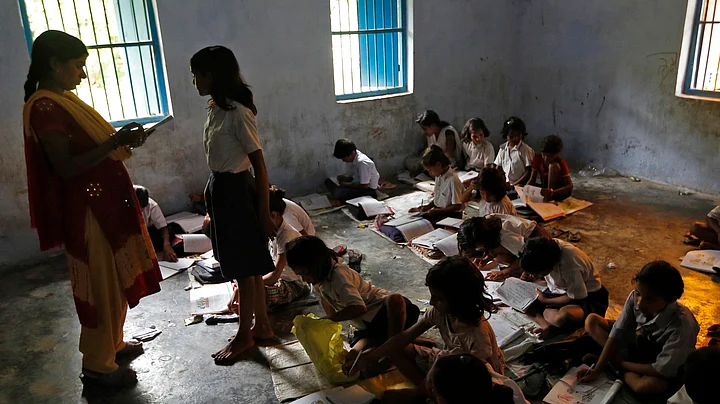India has a significant shortage of teachers in its government-run schools across the states. A recent report has found that the Hyderabad-Karnataka region alone has a shortage of 6,000 teachers in its schools.
Now, a Bengaluru-based NGO, eVidyaloka, is using technology to counter the problem of severe shortage of teaching staff.
eVidyaloka uses video chatting platforms like Skype or Google Hangout to bridge the gap in the number of teachers on the ground with teachers sitting anywhere in the globe. The NGO acts as a platform for teachers, content developers, and coordinators who make sure the system helps the students to get over the problems faced due to the shortage of teachers.
We as Indians have so much IT expertise to solve so many of the world’s problems using software and technology. The need of the hour is the equality in learning outcomes of children. With my background in companies like Dell and Microsoft, I always looked at how can we leverage this technology to solve the social issues in the countryVenkat Sriraman, one of the co-founders of the Initiative
From the comfort of their homes, a volunteer can teach rural children aged between 10 and 14 years for two hours a week. Currently, eVidyaloka operates in 82 schools in seven states— Karnataka, Andhra Pradesh, Tamil Nadu, Telangana, Jharkhand, West Bengal, and Maharashtra. For the current academic year, the platform has around 650 teachers on board.
Since there is already a shortage of teachers, sometimes teachers have to take multiple classes at the same time. So, there is no need of a parallel system. if there are seven periods in a day, we will have two classes of digital classrooms...We figured today that with the present rate of broadband penetration in the remote areas, we don’t necessarily need to be in the villages. We can act as an aggregator of all the resources that are available elsewhere, and make it available in the remote areasVenkat Sriraman
The digital classrooms have a 32-inch LCD screen with a high-powered camera and a conference mic. The coordinator arranges for the class timings and centres depending upon the batch size and availability of the teaching volunteers.
The teachers include retired teachers from India and abroad, housewives, graduate students, PhD scholars, working professionals, and even senior volunteers who have retired from various careers such as the defence forces.
Venkat says that although the NGO takes care of arranging teachers and prepares content which supplements the state curriculum, the local coordination is done by its partner NGOs and individual social workers.
We believe this is not a work of a single individual or an organisation. There has to be a strong ecosystem. So when we start operating in an area, we directly go there. We engage with the local partners, it can be NGOs or any similar establishments, who in turn work with the school and the administration. They engage with the headmasters, Block Education Officers, School Management CommitteesVenkat Sriraman
(This article was originally published in an arrangement with The News Minute.)
(Love your mother tongue? This Independence Day, tell The Quint why and how you love your bhasha. You may even win a BOL t-shirt! Sing, write, perform, spew poetry – whatever you like – in your mother tongue. Send us your BOL at bol@thequint.com or WhatsApp it to 9910181818.)
